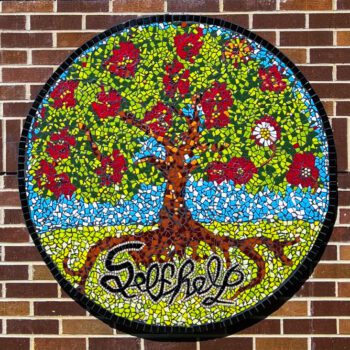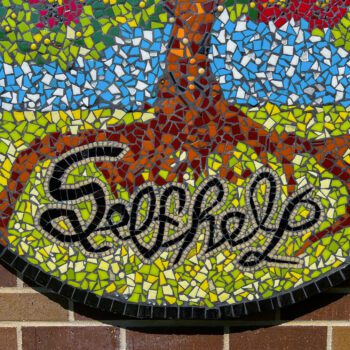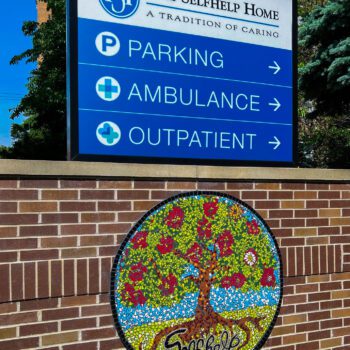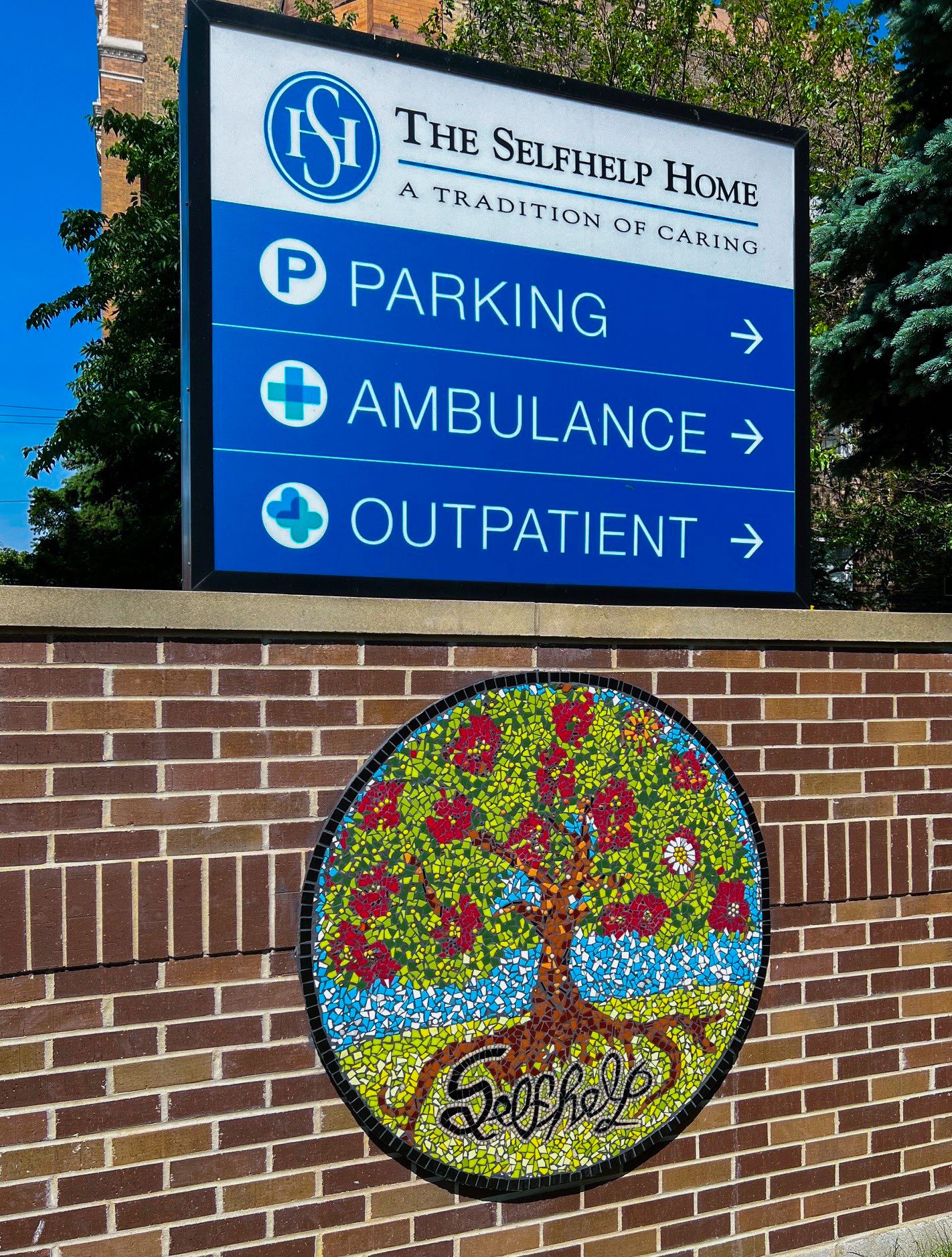


The Selfhelp Home Unveils Mosaic Art Piece Created by Residents
By Shari Imbo
We are thrilled to announce the installation of our new mosaic in front of The Selfhelp Home, an exciting project led by our talented Art Therapy intern, Maddy Engelfried, along with a highly creative group of residents. This vibrant piece of public art is not just a beautiful addition to our community but also a testament to the creativity and collaborative spirit that defines The Selfhelp Home. As we unveil this stunning mosaic, we look forward to the myriad benefits it will bring to our residents, enriching their daily lives and enhancing the welcoming atmosphere of our home.
The Benefits of Public Art in Senior Living Communities
Public art, ranging from murals and sculptures to interactive installations, has long been recognized for its ability to enrich public spaces. In recent years, the incorporation of public art into nursing homes has gained traction as a powerful tool to enhance the quality of life for residents. The benefits of integrating public art into these settings are multifaceted – encompassing emotional, cognitive, and social dimensions.
#1. Emotional Well-being and Mental Health
One of the most significant benefits of public art in nursing homes is its positive impact on emotional well-being. Art has the inherent ability to evoke emotions, provoke thought, and create a sense of peace and joy. For senior living home residents, many of whom may experience feelings of isolation, depression, or anxiety, public art can provide a much-needed emotional uplift. Bright, colorful murals or serene nature-themed installations can transform a sterile environment into a more inviting and comforting space, promoting a sense of happiness and relaxation.
Studies have shown that exposure to art can reduce stress and anxiety levels, improve mood, and even alleviate symptoms of depression. For older individuals, these effects are particularly valuable, contributing to a better overall mental health profile and enhancing their quality of life.
#2. Cognitive Stimulation
Engagement with public art can also serve as a powerful cognitive stimulant. Art encourages residents to think, reflect, and recall memories, thus keeping their minds active and engaged. Interactive art pieces, in particular, can prompt conversations and storytelling, which are excellent exercises for cognitive function. For residents with cognitive decline, public art can act as a therapeutic tool, aiding in memory recall and providing a sense of continuity and connection to their past experiences.
Moreover, art installations that change periodically or are created with input from the residents can offer ongoing cognitive challenges and stimulation, keeping their environment dynamic and engaging.
#3. Social Interaction and Community Building
Public art in nursing homes can also play a crucial role in fostering social interaction and building a sense of community. Art can serve as a focal point for gatherings, discussions, and shared experiences among residents, staff, and visitors. Collaborative art projects, where residents participate in the creation of a mural or sculpture, can strengthen social bonds, enhance communication, and provide a sense of accomplishment and pride.
These shared artistic endeavors can break down social barriers and encourage interaction among residents who might otherwise remain isolated. Additionally, involving family members and the local community in these projects can create intergenerational connections and foster a supportive and inclusive environment.
#4. Cultural Enrichment and Personal Expression
Public art brings cultural enrichment to nursing homes, introducing residents to diverse artistic styles and themes. This exposure can spark curiosity, inspire creativity, and provide opportunities for lifelong learning. For many residents, art can also be a medium for personal expression, allowing them to convey their feelings, experiences, and identities in a non-verbal manner.
Creating opportunities for residents to engage in artistic activities can be particularly empowering, giving them a voice and a means to express themselves despite physical or cognitive limitations. This personal expression can enhance self-esteem and provide a sense of purpose and fulfillment.
The Selfhelp Home offers several forms of art activities for residents and supports individual resident art expression. Selfhelp is also host to an Art Therapy Intern from the School of the Art Institute. Come view our new Mosaic Installation and learn more about The Selfhelp Home by contacting us at 773.271.0300 or emailing [email protected].


